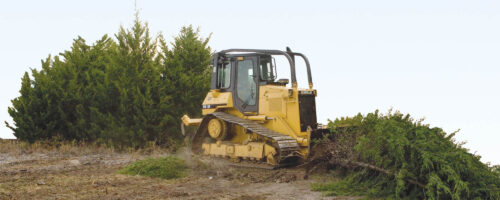When trying to manage an impoundment to be a productive sport fishery, water quality is one of the most important considerations. The first step in avoiding detrimental water quality problems is to manage a watershed well and keep undesirable fish species, such as common carp or bullheads, out of your pond. However, when problems arise, here are a few ways to diagnose and treat the problems.
To diagnose the cause of turbid waters, start by inspecting the watershed and pond edges for large areas of bare soil or thin vegetation. The majority of water quality issues in southern Oklahoma and northern Texas are due to soil erosion and livestock activity in and around ponds. Managing for sufficient grass cover in the watershed solves most problems associated with water quality.
Easy ways to prevent turbidity would be to establish vegetation buffers around the pond, reduce cattle stocking rate to prevent overgrazing in the watershed or utilize minimal tillage techniques. By fencing a pond and installing water access points for cattle, you can reduce the impact that cattle will have on the pond (see the March 1996 issue of Ag News and Views for more information on pond fencing). To reduce turbidity caused by wave action, establish vegetation such as rushes and sedges along the shoreline of the pond.

When turbidity is due to common carp or bullheads, there are a few options to consider. One is to use rotenone to kill all existing fish in a pond and re-stock with desirable fish species (for more information on applying rotenone, see the October 2003 Ag News and Views article). Other options are to stock adult largemouth bass to slowly reduce bullheads or drain the pond and leave it dry for at least six weeks to kill all the fish.

If the problem is due to suspended clay particles, there are options to reduce turbidity. Applications of alum or gypsum are the most common methods used to clear turbid waters. Before applying alum, measure alkalinity and collect six 15-quart samples of the turbid pond water in plastic buckets. Add 0, 10, 20, 30, 40 and 50 parts per million (ppm) alum (0, 5, 10, 15, 20, 25 ounces of alum, respectively) to the samples and stir for one to two minutes, then let them sit for one hour. The bucket with clear water and the lowest concentration of alum is the rate that should be applied to the pond. However, alum reduces alkalinity of pond water, so never apply alum at a concentration more than 1.5 times the alkalinity in ppm. For applying gypsum, conduct a similar test as for alum. For gypsum, use 0, 50, 100, 150, 200, 250 and 300 ppm (0, 25, 50, 75, 100, 125 and 150 ounces of gypsum, respectively) as the test concentrations, but let them sit for 24 hours after stirring. Use the lowest concentration that clears the water.
Remember, prevention is usually the best cure for problems associated with wildlife and fisheries management, and this is especially true with water quality in ponds.
Reference
Boyd, C. E. 1985. Water Quality Management in Ponds. Proceedings of the Symposium on Pond Management in Oklahoma. Noble Research Institute Inc.



Comment